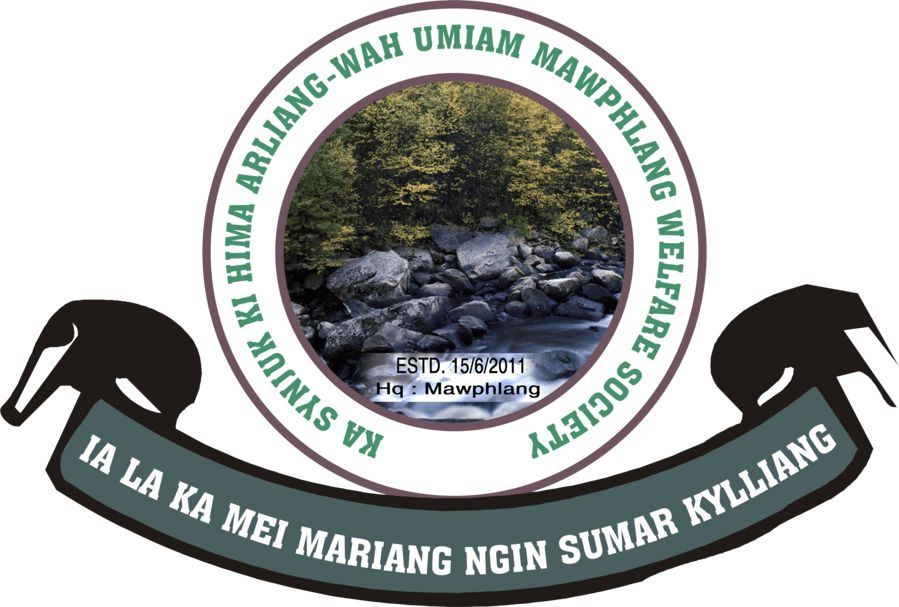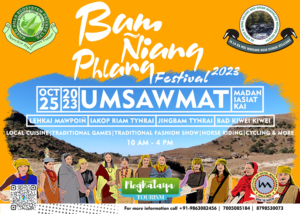Activities & Projects
Forestry Activities
i. Preservation of bio-diversity through rehabilitation of epiphytes, critical and endangered amphibians in the Sacred Forests.
ii. Fire control in the community forest areas through controlled burning (traditional Khasi method of fire control burning known as (Sain Ding), creation of fire lines and erection of sign boards.
iii. Afforestation through public participation in the private and community degraded areas. Control of stone quarrying, fuel wood collection, charcoal making, grazing and mining.
iv. Revival of sacred forests and community forests in different indigenous tradition institutions of the Khasi Hills through awareness and campaign.
v. Assisted Natural Regeneration – With support from Weforest, a Belgium-based non-profit over 1500 hectares of degraded land is being transformed into young secondary forest through enrichment planting and the restoration of native species.
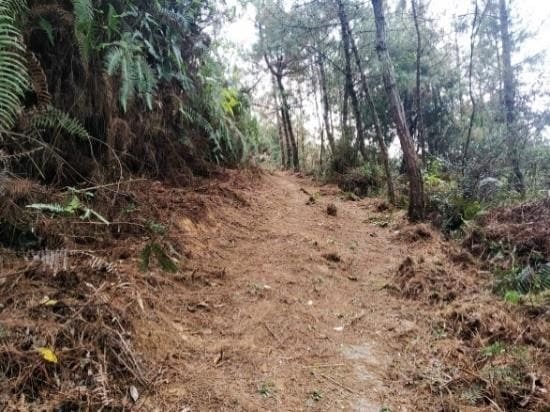
Socio-Economic Activities
ii. Formation and creation of Farmers Clubs
SHGs, Farmers Club.
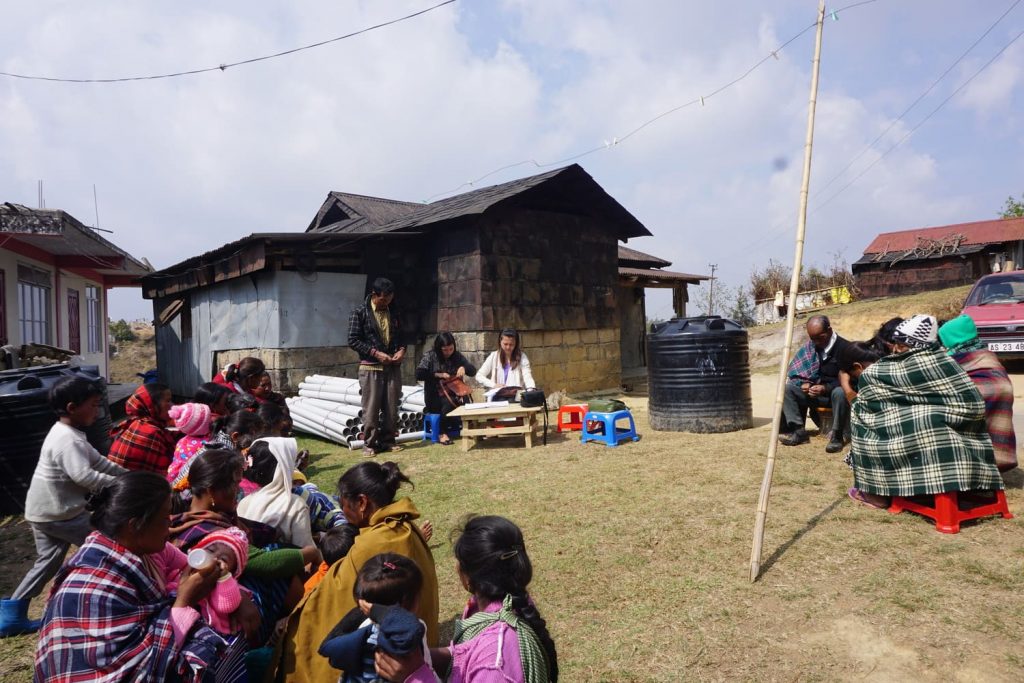
A Glimpse of Khasi Hills Community Redd+ Project
The Khasi Hills Community Redd+ Project is designed to slow, halt and, hopefully, reverses the loss of community forest cover in the project area by providing institutional,natural resource management and financial incentives. Furthermore, it represents a durable strategy to address the extreme poverty facing rural families through alternative sources of income and capacity building. It seeks to demonstrate how the Khasi community, coordinated by their own institutions can implement activities that control drivers of deforestation and thereby restore forest cover, improve watershed hydrology and make a transition to more sustainable agricultural systems which are climate resilient.
Objectives
To preserve forest and environment and to restore bio-diversity, etc. through:
a) Assisted natural regeneration (ANR). Conservation of existing community forests.
b) Protection and conservation of wildlife habitat.
c) Soil and water conservation measures.
d) Improvement of community living standards through income generating activities (IGAs).
e) Awareness of environmental protection and sanitation, and to explore ways and means to upheld ecological balances.
f) Holding meetings: youth conference,seminars, question and answer sessions,awareness campaigns, etc. to highlight contemporary problems and issues that youth and the general public face today especially in the field of environment and ecology.
g) Helping introduce and hold trainings on modern techniques of farming, horticulture, Silvi-culture, forestry management, etc.
h) Research ways and means to obtain funds from national & international NGOs or Government agencies in order to fund project activities.
Areas under Khasi Hills Community Redd+ Project
The project area is situated in the Sub-Watershed of Umiam River, East Khasi Hills District of Meghalaya, India. The project area largely covers the Umiam River sub-watershed, one of the major rivers of the state and an important water source for the state capital, Shillong.
The main objective of KSKHAWU-MWS is to protect and conserve the community forests and to improve the socio-economic livelihood of the community. The area of operation of the project is in the Sub-Watershed of Umiam Mawphlang River within the East Khasi Hills District of Meghalaya.
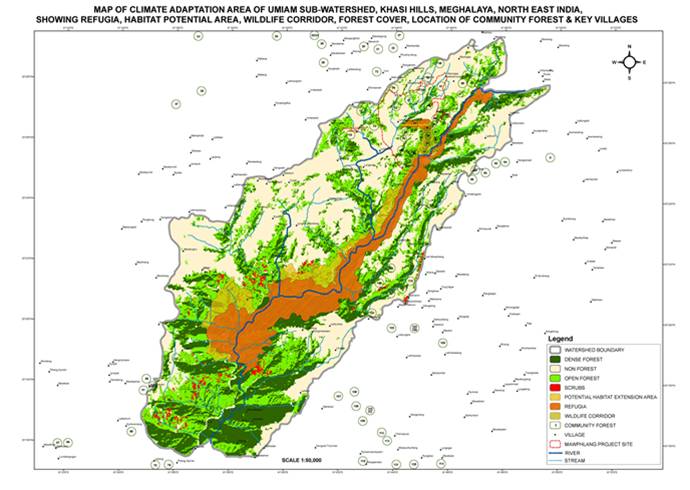
Project Summary
The present project area’s size is 23,512 ha. and covers 10 indigenous traditional Khasi territories called Hima. It covers the entire East Khasi Hills District of Meghalaya. Within these kingdoms, the 85 participating villages are located.
➢Total Project Area + Buffer Zone = 23,512 ha.
➢Scrub land= 3,761.47 ha
➢Dense forest = 2,846.8 ha
➢Open forest = 8,921.21 ha
Project Target Beneficiaries
The target beneficiaries belong to the Khasi tribe which is a scheduled tribe of Meghalaya, as listed in the following table:
demographICs | total |
|---|---|
Male population | 18,774 |
Female population | 19,597 |
TOTAL POPULATION | 38,371 |
TOTAL NO. OF FAMILIES | 7,700 |
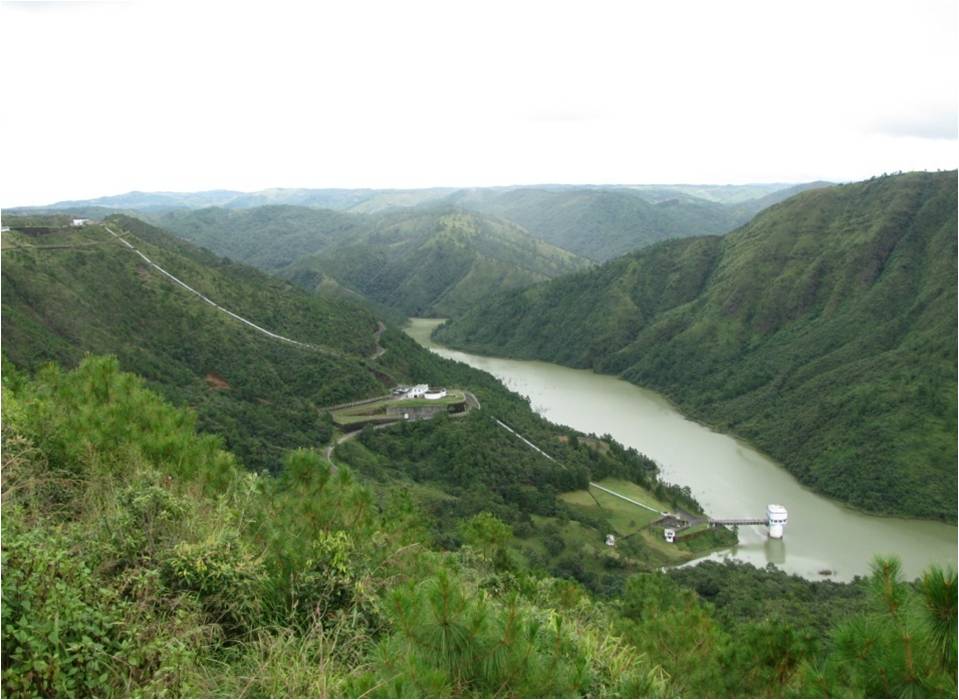
Greater Shillong Water Supply

BEFORE
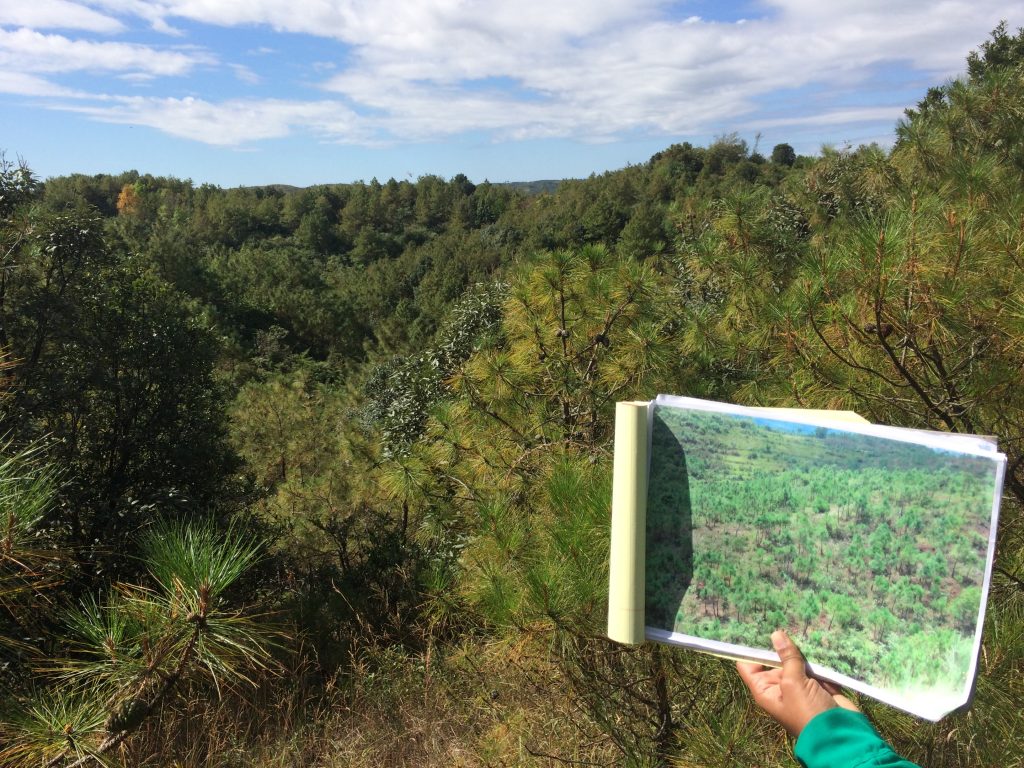
AFTER
Photographs of a section of the Cultural Operation at Lumlaitsohphoh area taken during 2007 & 2009 showing change in vegetation (Note increase of Crown Cover)

Taken in May 2007 (N 25 26 50.7, E 91 43 59.9)

Taken in Oct 2009 (N 25 26 50.7, E 91 43 59.9)
Photographs of quarrying area of the project site, before and after closure

Taken in May 2007 (N 25 27 06.7, E 91 44 05.4)

Taken in October 2009
Note the resultant landslides edging towards the Sacred Grove above and subsequent stabilization of landslide area
Implementing the Community Project
At the Synjuk Level:
The Synjuk is a Federation of the 10 Khasi indigenous governments or Hima located in the project area. The Synjuk is the administrative and implementing agency of the project. The Synjuk meets every three or four months in a year, where they pass resolutions on various agendas or approving the budget, reviewsthe annual report, and scrutinizes the list of beneficiaries under the project. The Synjuk authorized the Secretary to lead the Project Team comprisedof the forestry team, socio-economicteam, accounts team and the office team. They meet every week to plan activities and settle any technical problems. Problems related to political or community level is reported at the Synjuk meetings.
At the Hima Level:
Each of the ten Hima has a community facilitator (CF) chosen by the traditional head of each Hima. The CFs are selected for their maturity and past experience with voluntary community service. The CFs report the activities from the project both to the Hima and the Synjuk. At present we have 14 male and 10 female CFs representing their respective Hima. The male CFs are responsible for coordinating all forestry related activities including restoration of degraded lands and fire prevention in the dense forests. The women CFs work with the Self-help Groups to guide livelihood activities.
At the Cluster level or LWC level:
The project organizes villages into administrative clusters on a micro-watershed basis. Each cluster has a Local Working Committee (LWC). Each LWC is coordinated by a Community Facilitator selected by the community. The Project is divided into 19 Clusters and 3 Special Package Clusters with limited forest. The Project supports and encourages equal representation of men and women in the LWC. The Project has also established 68 women-run Self-help Groups (SHGs) that include both men and women. In addition, the Project has also established Farmers Clubs (FCs) that disseminate new agricultural and horticultural technologies in their communities. The members at the LWC level are well-represented by the headmen from the Cluster and the other members are equally represented from each village. The LWC oversees all the trainingand activities carried out at the cluster level. They hold meetings three times a year.
At village level:
Traditionally, each village has an administrative Headman, executive members, and judiciary. In order to expand the village capacity, the Project had each village recruit two youth volunteers to update the Village Knowledge Register (VKR) and also report on any illegal activities to the Headmen and CFs. They also participate with tree plantation and other forestry and socio-economic activities of the Project on an incentive basis. They attend training and awareness sessions at various intervals. At present, there are 124 Youth Volunteers at the village level comprising both men and women.
Edited By:
![]()
Mr. Tambor Lyngdoh
Secretary/CCF, Khasi Hills Community Project
KSKHAWU-MWS
